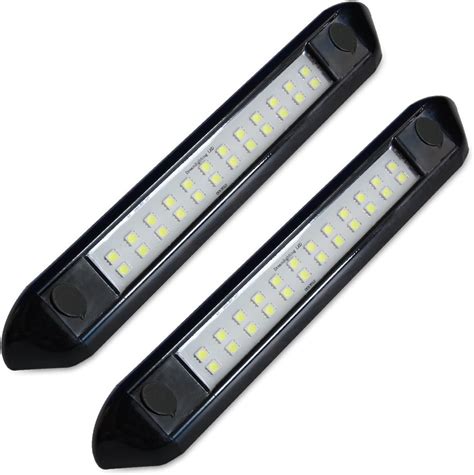In the realm of lighting, V lights have emerged as a versatile and energy-efficient solution, revolutionizing the way we illuminate our homes, workspaces, and outdoor areas. With their compact size, low wattage, and high lumens output, V lights offer a myriad of possibilities for creating vibrant and ambient lighting environments. In this extensive guide, we delve into the world of V lights, exploring their advantages, applications, and how to harness their power to enhance your lighting experience.

Advantages of 12 V Lights
1. Energy Efficiency:
V lights consume significantly less energy compared to traditional incandescent bulbs, making them an eco-friendly and cost-effective lighting option. They typically operate on a voltage range of 10-14 volts, reducing energy consumption up to 80%.
2. Long Lifespan:
With an average lifespan of 25,000 to 50,000 hours, V lights outlast incandescent bulbs by a factor of 10 to 20 times. This extended longevity reduces maintenance costs and ensures uninterrupted illumination for years to come.
3. Compact Size and Versatility:
V lights are incredibly compact, allowing them to fit into tight spaces and under cabinets, creating targeted illumination where it’s needed most. Their versatility makes them suitable for both indoor and outdoor applications, from kitchens to gardens.
Applications of 12 V Lights
The possibilities for V light applications are endless, limited only by your imagination. Here are some popular use cases:
- Home Lighting: Under-cabinet lighting, accent lighting, track lighting, and decorative fixtures
- Workspace Lighting: Task lighting, pendant lights, and industrial fixtures
- Outdoor Lighting: Path lighting, floodlights, and landscape lighting
- Automotive Lighting: Headlights, taillights, and interior lights
Common Mistakes to Avoid When Using V Lights
1. Overvoltage:
Never connect V lights to a voltage source exceeding 14 volts, as this can damage the bulbs and shorten their lifespan.
2. Direct Connection:
Avoid connecting V lights directly to an AC power source. Always use a transformer or voltage regulator to convert AC voltage to DC voltage suitable for the lights.
3. Mismatched Voltage:
Ensure that the voltage of the transformer or voltage regulator matches the voltage requirement of the V lights. Mismatched voltages can lead to flickering or premature bulb failure.
Pros and Cons of V Lights
Pros:
- Energy-efficient
- Long lifespan
- Compact size and versatility
- Low operating temperature
- Dimmable (with compatible transformers)
Cons:
- Requires transformer or voltage regulator
- Can be more expensive than traditional incandescent bulbs
- Not as bright as some other light sources (e.g., LEDs)
Innovative Applications of V Lights
V-Light Curtains: Create shimmering, ethereal lighting effects by hanging V lights on sheer curtains or fabric panels.
V-Light Sensory Wall: Engage the senses by installing V lights behind a fabric or translucent wall, creating a calming and interactive sensory experience.
V-Light Pendants: Suspend V lights from high ceilings or over kitchen islands, providing ambient illumination with a touch of elegance.
Tables for V Light Specifications
Table 1: V Light Dimensions and Wattage
| Size | Wattage |
|---|---|
| G4 | 0.5-2W |
| G6.35 | 2-5W |
| MR11 | 2-5W |
| T5 | 5-10W |
Table 2: V Light Lumens Output
| Lumens | Wattage |
|---|---|
| 50-100 | 0.5-1W |
| 150-250 | 2-3W |
| 250-500 | 5-10W |
| 500-1000 | 15-25W |
Table 3: V Light Beam Angles
| Beam Angle | Description |
|---|---|
| 8° | Narrow, focused beam |
| 15° | Medium beam |
| 30° | Wide beam |
| 60° | Flood beam |
Table 4: V Light CRI
| CRI | Description |
|---|---|
| 80-90 | High CRI, excellent color rendering |
| 90-100 | Ultra-high CRI, exceptional color rendering |
